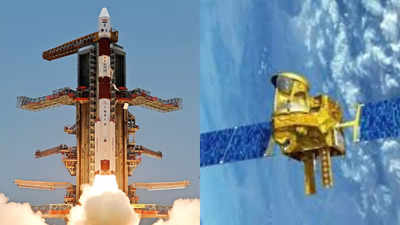- News
- Business News
- India Business News
- Eco Survey: Strides in space transforming infra projects, laying groundwork for future missions
Trending
Eco Survey: Strides in space transforming infra projects, laying groundwork for future missions
India's space capabilities are advancing with 56 active satellites and the addition of a small satellite launch vehicle by Isro. New missions, such as the Gaganyaan follow-on and Chandrayaan-4, are set to expand India's space footprint further. Enhanced geospatial platforms support various infrastructure projects.
INDIA: India’s expanding space capabilities are transforming infrastructure management and laying the groundwork for ambitious future missions, the Economic Survey 2024-25 has said.
The Survey 2024-25, presented by FM Nirmala Sitharaman on Friday, notes that India currently operates 56 active space assets, including 19 communication satellites, nine navigation satellites, four scientific satellites and 24 earth observation satellites, thereby building a formidable space ecosystem.
Isro has enhanced its capabilities by adding a small satellite launch vehicle (SSLV) to its fleet. Moreover, New Space India Limited (NSIL) has successfully fulfilled its contract to launch 72 OneWeb satellites into the low earth orbit. It also launched GSAT-20 satellite in collaboration with Elon Musk-owned SpaceX. GSAT-20, launched aboard SpaceX’s Falcon 9 rocket, is a high-throughput communication satellite, designed to enhance data transmission capacity for India's communication infrastructure.
Looking ahead, India’s Space Vision 2047 is steering the country towards groundbreaking milestones. The Cabinet has approved four major missions: Gaganyaan follow-on mission, which will contribute to establishing Bharatiya Antariksh Station; Chandrayaan-4 Lunar Sample Return Mission; Venus Orbiter Mission; and the development of Next Generation Launch Vehicle.
Key platforms are Bhuvan platform, which supports infrastructure monitoring under schemes like MGNREGA and Pradhan Mantri Krishi Sinchayee Yojana; Electrical Infrastructure Management, which facilitates management of electrical infrastructure in states like Maharashtra through Web-GIS portals; NyayaVikas Portal for Judicial Infrastructure, which has been developed in collaboration with Department of Justice and monitors 2,840 judicial projects; and creation of large-scale 2D urban geospatial databases for 238 AMRUT cities.
End of Article
FOLLOW US ON SOCIAL MEDIA
Visual Stories
Hot Picks
TOP TRENDING
Explore Every Corner
Across The Globe
















